This action is only valid for products that are currently installed [Fix]
The error message described above has been received by a wide array of different users while trying to launch applications that are part of the Microsoft Office suite of programs, especially Microsoft Excel. The error message has been reported crossing Windows version borders, meaning that it is a threat to users of all iterations of the Windows Operating System that are currently supported by Microsoft. In addition, the error message is also not specific to one version of the Microsoft Office suite of applications. In fact, the error message has been seen on a wide variety of iterations of Microsoft Office ranging from Office 365 to Office 2007 and Office 2010.

Regardless of what version of Microsoft Office you are receiving this error message with or the version of Windows you are getting it on, the underlying cause behind this problem is the same in almost all instances – a trial version of Microsoft Office being installed on the affected computer alongside the standard, retail copy of Microsoft Office that was later installed on it. The two conflicting instances of Microsoft Office that are installed on the affected computer create a colossal mess, resulting in the user seeing an error message that reads “This action is only valid for products that are currently installed.” whenever they try to launch a Microsoft Office application such as Excel. A trial copy of Microsoft Office being installed on a computer that a retail copy has also been installed to can be especially devastating for functionality if your trial period on the trial copy has come to an end.
Fortunately for anyone that has fallen victim to this specific problem, since the most probable cause of this issue is known, so is its most likely resolution. If you are seeing the “This action is only valid for products that are currently installed.” error message every time you try to launch a Microsoft Office application, here’s what you need to do in order to resolve the problem:
- Open the Start Menu (or click on the Cortana Search bar in your computer’s Taskbar).
- Search for “uninstall“.
- Click on the search result titled Add or remove programs.
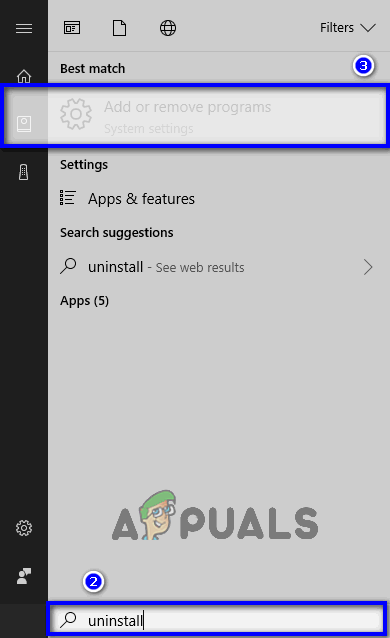
Add or remove programs - Wait for your computer to populate the list of applications and programs installed on your computer. Once the list has been populated, scroll through it and locate the listing for the Microsoft Office Trial version you have on your computer. As soon as you locate the Microsoft Office Trial version that has been installed on your computer, click on it to select it.
- Click on Uninstall.

Click on Uninstall - Following the onscreen instructions, go through the uninstallation wizard all the way through to the very end. Once you have made your way through the uninstallation wizard, you will have uninstalled the trial version of Microsoft Office you had on your computer, effectively resolving the conflict the actual retail version of Microsoft Office was running into. You will, however, still have to repair the retail version of Microsoft Office in order to get it to go back to working the way it is supposed to.
- Back in the list of applications and programs installed on your computer, locate the retail version of Microsoft Office you have on your computer, and click on it to select it.
- Click on Change.
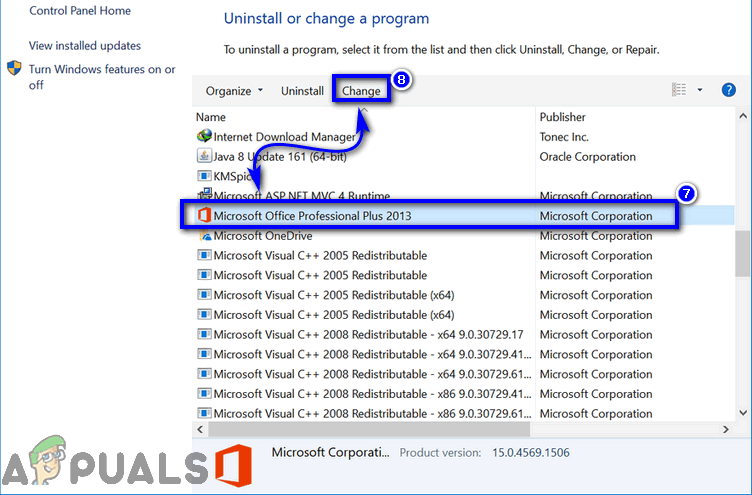
Select Microsoft Office and click on Change - In the window that opens up, select Repair and click on Continue.
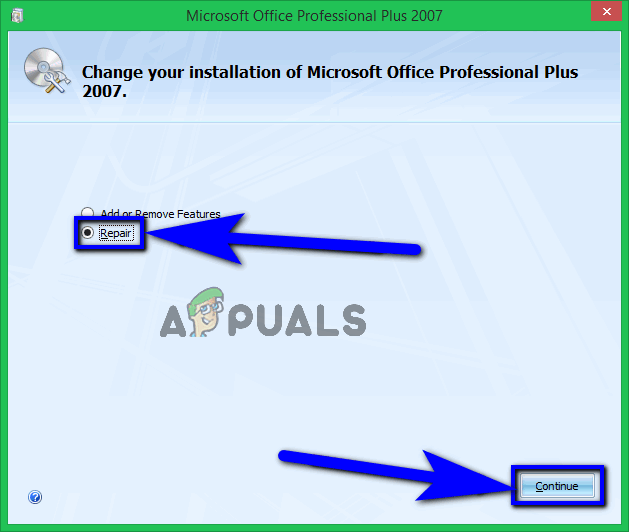
Select Repair and click on Continue - Go through the repair wizard and follow it through to the very end.
- Once you reach the end of the repair wizard (at which point the repair will have been complete), click on Close and restart your computer. The repair wizard checks your installation of Microsoft Office for corrupted or otherwise damaged files and replaces them fresh, completely intact copies.
- When your computer boots up, check to see whether or not the problem has been resolved.
If the problem still persists, the repair simply wasn’t enough. To get rid of the problem for good, you are going to have to take another step forward – you will have to uninstall your copy of Microsoft Office from your computer and then reinstall it. Doing so will simply reset your installation of Microsoft Office back to day zero, which resolves a plethora of different problems with applications, this one included. To uninstall your copy of Microsoft Office, you need to:
- Open the Start Menu (or click on the Cortana Search bar in your computer’s Taskbar).
- Search for “add or remove programs“.
- Click on the search result titled Add or remove programs.

Add or remove programs - Wait for your computer to populate the list of applications and programs installed on your computer. Once the list has been populated, scroll through it and locate the listing for the version of Microsoft Office you use, and then click on it to select it.
- Click on Uninstall.
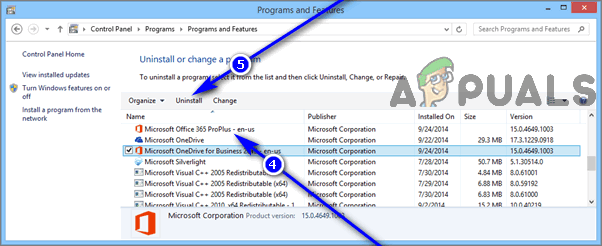
Select Microsoft Office and click on Uninstall - When asked if you are sure you want to uninstall Microsoft Office from your computer, click on Yes.
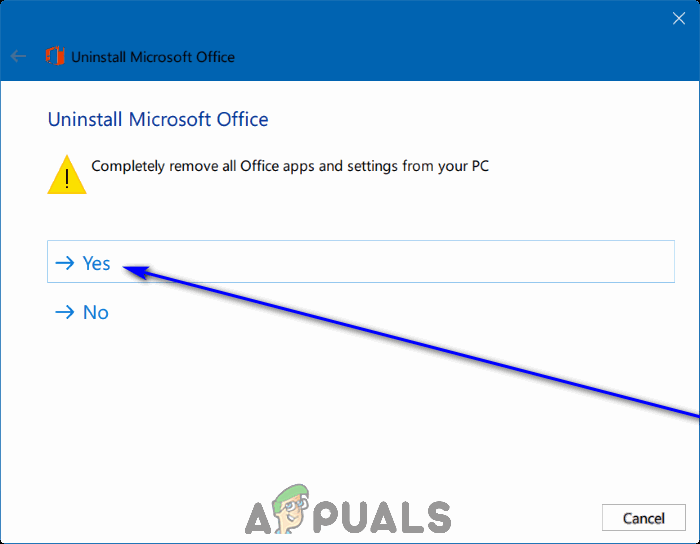
Click on Yes - Follow the uninstallation wizard’s onscreen instructions all the way through to the very end.
Once you have successfully uninstalled your retail copy of Microsoft Office from your computer, you can go ahead and reinstall it. When it is time to do so, simply use the same means and mediums you used to install it on your computer in the first place. If you acquired your copy of Microsoft Office as a digital download, simply reinstall it from the internet, or if your retail copy of Microsoft Office came with an installation disc or other installation medium, use that installation medium to reinstall it on your computer. Check to see if you have managed to rid your computer of the “This action is only valid for products that are currently installed.” error message when Microsoft Office has been reinstalled.




